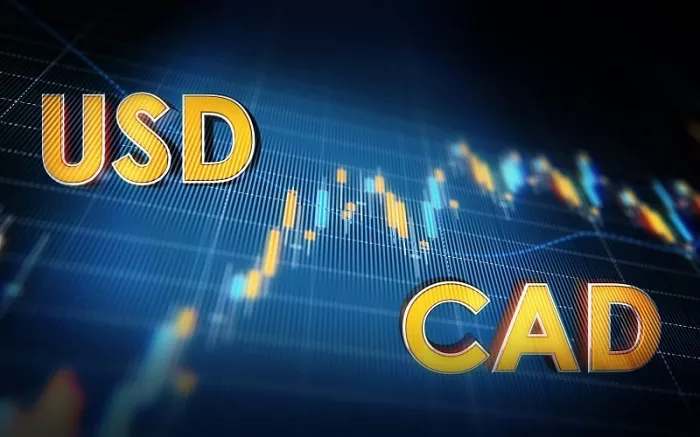In the foreign exchange market on Friday, the USD/CAD currency pair is showing signs of recovery from recent losses. During the Asian trading hours, it is trading around 1.4330, edging closer to the 1.4350 mark. This upward movement comes at a time when global economic conditions are becoming increasingly complex.
US Dollar’s Safe-Haven Appeal Drives USD/CAD
The US Dollar (USD) is strengthening due to heightened safe-haven demand. This is a direct result of escalating global trade tensions, which have been stoked by US tariff policies. As international trade relations become more strained, investors are flocking to the relative safety of the US Dollar. This increased demand for the greenback provides a significant boost to the USD/CAD pair.
Federal Reserve Chair Jerome Powell’s statements have also added to the market’s dynamics. While he downplayed the inflationary impact of tariffs, labeling it as temporary, he did acknowledge the broader economic uncertainty that these trade policies have created. Despite the fact that recession risks have grown, Powell indicated that they are still relatively low. This has given some reassurance to investors, but also left them cautious.
US Economic Data Adds to the Mix
Recent US economic data has presented a mixed picture. The US Initial Jobless Claims for the week ending March 15 rose to 223,000. This figure slightly missed the market estimate of 224,000 and was higher than the revised figure of 221,000 from the previous week. On the other hand, the Philadelphia Fed Manufacturing Survey for March declined to 12.5 from February’s 18.1. Although this marks a second consecutive monthly drop, it remains above the expected figure of 8.5. These data points are influencing the market’s perception of the US economy and, in turn, the value of the US Dollar.
Canadian Dollar Under Pressure
Political Uncertainty Weighs on the CAD
The Canadian Dollar (CAD) is facing significant downward pressure. A major factor contributing to this is the political uncertainty in Canada. Reports suggest that new Prime Minister Mark Carney may call a snap election on April 28. This has raised concerns among investors about potential policy instability, leading to a weakening of investor sentiment towards the Canadian Dollar.
Trade and Interest Rate Woes for the CAD
The situation is further exacerbated by external factors. US President Donald Trump’s tariff threats on Canadian imports, on top of the existing duties on steel and aluminum, have dampened investor confidence in the Canadian economy. Additionally, the Bank of Canada’s (BoC) recent decision to cut interest rates to 2.75% has widened the interest rate differential with the Federal Reserve. This has made Canadian assets less attractive to foreign investors, driving capital outflows and putting additional downward pressure on the Canadian Dollar.
Key Influences on the Canadian Dollar
Interest Rates and Monetary Policy
The Bank of Canada plays a crucial role in determining the value of the Canadian Dollar. By setting the interest rates at which banks can lend to one another, the BoC influences the overall interest rate environment in the country. Its primary objective is to maintain inflation within the 1 – 3% range. Generally, relatively higher interest rates are beneficial for the CAD. The BoC can also implement quantitative easing or tightening measures. Quantitative easing, which involves increasing the money supply, is typically considered negative for the CAD, while quantitative tightening has the opposite effect.
Oil Prices and the CAD
Oil prices have a profound impact on the Canadian Dollar. As Canada’s largest export is petroleum, fluctuations in oil prices directly affect the CAD. When the price of oil rises, the aggregate demand for the Canadian Dollar increases, leading to an appreciation of the currency. Conversely, a decline in oil prices weakens the CAD. Higher oil prices also increase the likelihood of a positive trade balance for Canada, which further supports the currency.
Inflation and Economic Data
Inflation data has an unexpected impact on the Canadian Dollar. In modern times, with the relaxation of cross – border capital controls, higher inflation can actually be positive for a currency. When inflation rises, central banks tend to increase interest rates. This attracts global investors seeking higher returns, increasing the demand for the local currency, in this case, the Canadian Dollar.
Macroeconomic data releases are also key in determining the value of the CAD. Indicators such as GDP, Manufacturing and Services Purchasing Managers’ Indices (PMIs), employment figures, and consumer sentiment surveys all provide insights into the health of the Canadian economy. A strong economy not only attracts foreign investment but may also prompt the Bank of Canada to raise interest rates, leading to a stronger Canadian Dollar. Conversely, weak economic data can cause the CAD to depreciate.
Related Topics:
Danske Bank Predicts Short – Term Decline for USD/CAD to 1.41
USD/CAD Under Pressure Amid US CPI Data and Bank of Canada Policy, AUD/CAD Stagnates Around 91c
USD/CAD Slides Below 1.4350 as Trump Delays Canada’s Auto Tariffs


